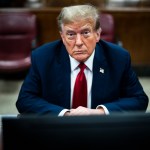More information on the thoroughness of the Senate intel committee report …
This new article by Knight Ridder’s Jonathan S. Landay and Warren P. Strobel tells the story of one of the defectors who provided key information on those mobile biological weapons labs that turned out not to exist.
Maj. Mohammad Harith was brought to the Defense Department by James Woolsey in February 2002.
According to the article, Woolsey originally denied that he had played a role in bringing Harith to DOD. After Knight Ridder obtained access to a classified DOD report describing Woolsey’s role, he declined further comment.
“By using his Pentagon contacts,” write Landay and Strobel, “Woolsey provided a direct pipeline to the government for Harith’s information that bypassed the CIA, which for years had been highly distrustful of the exile group that produced Harith.”
The article goes on to say that, according to Francis Brooke — Chalabi’s key hand in Washington — “intermediaries such as Woolsey and former Pentagon official Richard Perle, another leading war advocate, contacted the Bush administration multiple times on the INC’s behalf.”
Given the role of various Washington neoconservatives in providing conduits for Chalabi’s defectors or pushing (what turned out to be) bad information into the system, the facts here aren’t really that surprising. Nor is there anything inherently wrong with close administraiton advisors using their access to bypass normal channels, though it is inevitably problematic, as the article makes clear. What’s worth noting, however, is that none of this appeared anywhere in the Senate report.
This whole subject area runs against the general thrust of the report, which is that the CIA sold the White House a bill of goods. And either by coincidence or design — you pick — the whole matter gets no airing in the report.
Then there’s this passage …
After several meetings, a DIA debriefer concluded that some of Harith’s information “seemed accurate, but much of it appeared embellished” and he apparently “had been coached on what information to provide.”
Those findings weren’t included in the initial DIA report on Harith, which noted that he’d passed a lie detector test, the Senate committee said.
However, further intelligence assessments in April, May and July 2002 questioned his credibility – including a “fabricator notice” issued by the DIA. Nevertheless, Harith’s claim was included in an October 2002 National Intelligence Estimate and cited by Bush in his January 2003 State of the Union message.
There’s no indication in the Senate Intelligence Committee report why Bush and other top administration officials used Harith’s information after it was found by intelligence professionals to be bogus.
There will be more of this.






